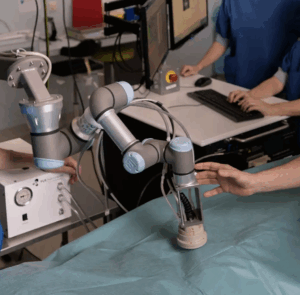
Results of a first-in-human study of non-invasive, robotic-assisted high intensity focused ultrasound (HIFU) for the treatment of peripheral arterial disease (PAD), to be presented Friday morning, will show that the therapy appears to be safe and feasible for the treatment of PAD localized in the femoral artery.
Robert M Wiggers, MD, a vascular surgery PhD candidate at University Medical Center Utrecht in Utrecht, The Netherlands, will present findings of the safety and feasibility study, which includes results following the treatment of 12 patients treated using the therapy, during the International Plenary taking place 6:30–8 a.m. on the Second Floor, Room 224, at the 2025 Vascular Annual Meeting (VAM) in New Orleans (June 4–7).
Robot-assisted HIFU creates thermal lesions with submillimeter resolution enabling precise targeting of atherosclerotic plaques, Wiggers will detail. Preclinical studies have demonstrated the safety of the treatment, which it is hoped may be associated with fewer perioperative risks.
This first-in-human, non-randomized pilot study includes symptomatic PAD patients with a primary stenosis of the common femoral and/or proximal superficial femoral artery. Primary outcomes of the study include the major complication rate and technical feasibility. Secondary outcomes included clinical endpoints, such as the ankle-brachial index, and imaging parameters.
Between June 2019 and April 2024, investigators screened 232 limbs in 205 patients for treatment, ultimately treating 12 patients with unilateral lesions using HIFU treatment. They found that the mean treatment time was 113±28.2 minutes and technical success was achieved in all patients. No major complications occurred within 30 days of the procedure, or during the three months of follow-up.
Throughout a median clinical follow-up of 19.8 months, one patient underwent endovascular target lesion reintervention (TLR), while the other patients remained free from TLR, Wiggers is due to report. Eight patients (66.7%) underwent additional ipsilateral imaging after the study follow-up, after a median 25.9 months. Of these, four (50%) no longer had significant (>50%) stenosis of the target artery, as judged by independent radiologists.












